ALEXANDROUPOLIS
Alexandroupolis (Greek: Αλεξανδρούπολη, pronounced [aleksanˈðrupoli]), Alexandroupoli, or Alexandrople is a city in Greece and the capital of the Evros regional unit. It is the largest city in Greek Thrace and the region of Eastern Macedonia and Thrace, with a population of 71,601, and is an important port and commercial center for northeastern Greece.
The city was first settled by the Ottoman Empire in the 19th century and grew into a fishing village, Dedeağaç. In 1873, it became a kaza and one year later was promoted to a sanjak. The city developed into a regional trading center. Later, it became a part of Adrianople Vilayet. During the Russo-Turkish War (1877–1878), it was briefly captured by the Russians. Ottoman rule ended with the First Balkan War, when the city was captured by Bulgaria in 1912. In the Second Balkan War, Greece took control of the city. With the Treaty of Bucharest (10 August 1913), the city returned back to Bulgaria.
 |
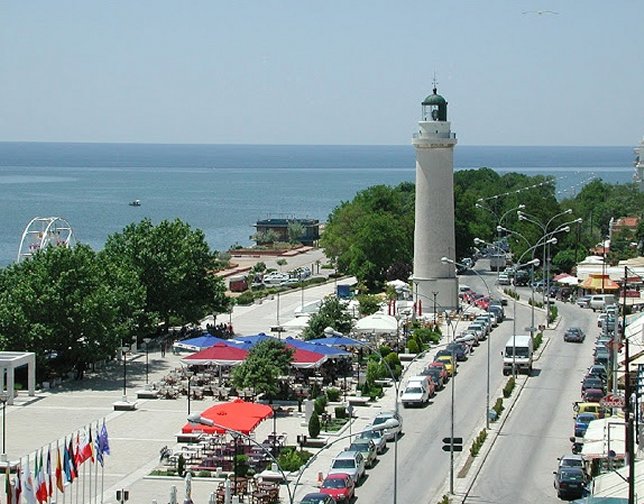 |
Alexandroupolis Lighthouse of Alexandroupolis
With the defeat of Bulgaria in World War I, the city came under Greek control for the second time. In 1920, the city was renamed to honour the King of Greece, Alexander. With the Treaty of Lausanne in 1923, Alexandroupolis became an official part of Greece.
The modern city is near the site of ancient Sale, a colony of Samothrace. Alexandroupolis, as well as the whole area from the Evros Delta to Lake Vistonida and the foothills of Rhodope Mountains, was inhabited by Cicones, a Thracian people with whom, according to mythology, Odysseus and his comrades clashed on their return from Troy.
Alexandroupolis benefits from its position at the centre of land and sea routes connecting Greece with Turkey. Landmarks in Alexandroupolis include the lighthouse in the port, the archaeological sites of the Mesimvria Zone, the city's waterfront (the centre of commercial activity), the Ethnological Museum of Thrace, the thermal springs (Hana) of Traianoupoli, the cave of the Cyclops Polyphemus and the nearby Evros delta.
Alexandroupolis has developed into a strategic port for both Greece and NATO in 2022, complementing the port of Souda in southern Greece.
Name
The modern city of Alexandroupolis was founded as a small fishing village in the early 19th century under the Ottoman Empire, by fishermen from Ainos and the villages of Makri and Maroneia. It became known as Dedeağaç (Greek: Δεδεαγάτς; Turkish: Dedeağaç; Bulgarian: Дедеагач). The name supposedly comes from an old Turkish wise man (Turkish dede) who spent much of his time under the shade of a tree (ağaç) and was eventually buried beside it. From the first days of the city's capture (May 14, 1920), the local authorities as well as the Metropolitan, decided to rename the city from Dedeağaç to Neapoli ("new city"), as it was the newest Greek city. In 1920, King Alexander I of Greece visited the city, and the local authorities renamed the city Alexandroupoli ("city of Alexander") in his honor, with the approval of the central government.
History
From Neolithic Period to the 19th century
Human settlements appear since the Neolithic Period (4500-3000 BC) at the southeast end of Western Thrace. In the Bronze Age (3000-1050 BC) there is no strong evidence of active city participation. During the Early Iron Age (1050-650 BC) the various Thracian tribes appeared and settled in mountainous and, more rarely, in lowland areas. In the Byzantine Period, the region which covers the modern city of Alexandroupolis played a leading role, because the city bordered Constantinople. For this reason the settlement was guarded by powerful military installations. In the following years, up to the 19th century, the city seems to have been deserted and covered by forests and wild trees.
Ottoman era
The modern city was first settled in the 19th century, under the Ottoman Empire. Long used as a landing ground for fishermen from the opposite coast of Samothrace, a hamlet developed in the area during the construction of a railway line connecting Constantinople to the major cities of Macedonia from Pythio. The work was part of an effort to modernise the Empire, and was assigned to engineers from Austria-Hungary. The settlement grew into a fishing village, Dedeağaç.
In 1873 it was made the chief town of a kaza, to which it gave its name, and a kaymakam was appointed to it. In 1884 it was promoted to a sanjak, and the governor became a mutasarrıf. In 1889 the Greek archbishopric of Aenus was transferred to Dedeağaç. In the late 19th and early 20th century, Dedeağaç was part of the Adrianople Vilayet.
Russo-Turkish War
Dedeağaç was captured by the Russians during the Russo-Turkish War (1877–1878). Russian forces settled in the village. The officers in charge saw that reconstruction incorporated wide streets running parallel to each other, allowing the quick advance of troops, and avoided cul-de-sacs. This was very unlike the narrow alleys, cobbled streets, and dead-ends that were characteristic of Ottoman cities at the time. The city returned to Ottoman control by the end of the war. The brief Russian presence had a lasting effect on the design of Alexandroupolis' streets.
Balkan Wars
The building of a railway station in Dedeağaç led to the development of the village into a town, and a minor trade centre by the end of the century. The town became the seat of a pasha as the capital of a sanjak. Ottoman control of the town lasted until the Balkan Wars. On 8 November 1912, Dedeağaç and its station was captured by Bulgarian forces with the assistance of the Hellenic Navy. Bulgaria and Greece were allies during the First Balkan War, but opponents in the Second Balkan War. Dedeağaç was captured by Greek forces on 11 July 1913. The Treaty of Bucharest (10 August 1913) determined that Dedeağaç would be returned to Bulgaria along with the rest of Western Thrace.
In September 1913, after the end of the Second Balkan War, about 12,000 Bulgarian refugees took refuge in the outskirts of the city. They were from 17 different villages all over the Western Thrace fleeing ethnic cleansing.
World War I
The defeat of Bulgaria by the Allies in World War I (1914–1918) ensured another change of hands for the town. Western Thrace was withdrawn from Bulgaria under the terms of the 1919 Treaty of Neuilly. Alexandroupolis was under temporary management of the Entente led by French General Charpy. In the second half of April 1920 prime ministers of the main allies of the Entente powers (except United States), gave Western Thrace to Greece at the San Remo conference. Bulgaria retained the right of transit to use the port of Dedeagach to transport goods through the Aegean Sea.
The change of guard between French and Greek officials occurred on May 14, 1920, in the city's Post Office. In the interior of the Post Office there is a memorial plaque concerning this event. The city was soon visited by Alexander of Greece. He was the first King of Greece to visit the town which was renamed in his honour.
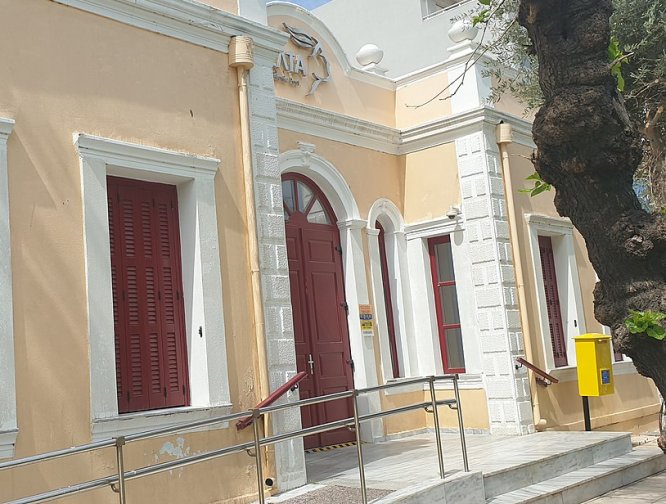 |
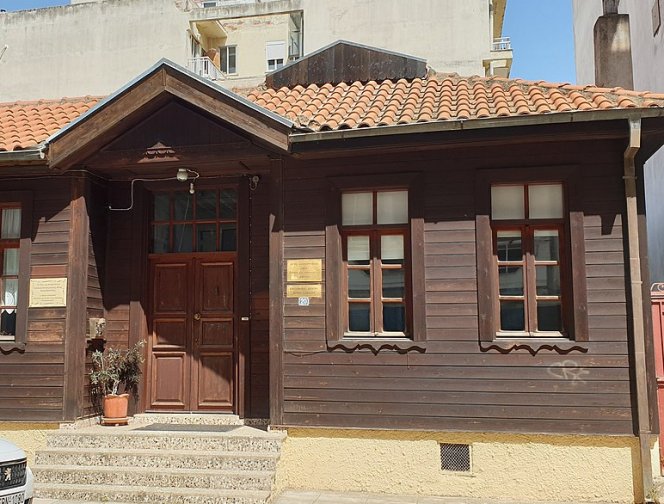 |
The city's Post Office ...
... and one of the oldest houses, today used by the Greek-French Friendship Society
Greco-Turkish War
Following the defeat of Greece in the Greco-Turkish War (1919–1922), the Greek Army under General Theodoros Pangalos retreated from Eastern Thrace to the area of Alexandroupolis. Bulgaria used the opportunity of the Greek defeat to demand that Alexandroupolis either be returned to Bulgarian control or declared a neutral zone under international control. Both demands were rejected by the Greek leadership and found no support in the League of Nations. The Treaty of Lausanne (24 July 1923) affirmed the Greek sovereignty of Western Thrace.
World War II
During World War II the Nazis gave Alexandroupolis to their Bulgarian partners. Alexandroupolis was under Bulgarian occupation between May 1941 and 1944. Before the war the city had a Jewish community of 150 members. The city suffered destruction of its Jewish population by Bulgarian forces. In March 1943 the Jews were deported to the Nazi death camps, where they were exterminated. Only 4 Jews survived. The city suffered some damage to buildings and a loss of population during the war.
Alexandroupolis was largely spared the effects of the Greek Civil War (1946–1949). Forces of the communist Democratic Army of Greece in and around the town area were small and loosely organized, resulting in the absence of major battles in the area. The return of peace allowed for Alexandroupolis to grow from a town of 16,332 residents in 1951 to a city of 57,812 residents by 2011.
Changes in local governance
Since 1930, Alexandroupolis has been in the Evros regional unit in the administrative region of Eastern Macedonia and Thrace, in the historical region of Western Thrace. In 2006, the province of Alexandroupolis was abolished. In 2011, the municipality of Alexandroupolis was created by the merger of three former municipalities of Alexandroupolis, Feres and Traianoupoli. The municipality currently has an area of 1,216.954 km2, and is divided into the communities of Aisymi, Avas, Kirki, Makri and Sykorrachi.
Culture
Each year, in the summer on the coast avenue of King Alexander, a book exhibition is held. Every two years near the harbor the international trade fair "Alexpo" is organized.
On 14 May each year, the annexation of the city and Thrace to Greece is celebrated by a parade. The city's patron saint is Saint Nikolaos, whose feast is celebrated on 6 December each year.
Wine Festival
Until the 1980s in the city, the Wine Festival was held under the auspices of the Greek National Tourism Organization (EOT). This celebration revived after 25 years, in the summer of 2013 at the initiative of the Municipality of Alexandroupolis and is the city's greatest cultural event. The city's and Evros's regional unit cultural associations offer red and white local wine along with various meats.
Nautical Week
In the summer of 2022, the Municipality of Alexandroupolis revived the "Nautical Week" after many years. This fest takes place in July and includes a number of events and activities, which aim to highlight the seamanship and the special relationship of Alexandroupolis and its people with the sea.
Ecopark "Altinalmazis"
Since May 2017, Alexandroupolis has a new 1400-seat garden theatre in "Ecopark Altinalmazis ", where various cultural events such as theatrical performances and concerts are held. It has an area of 135,597 sq.m. (80 acres) and has a refreshment, walkways, green spaces and kiosks. This park is named after Konstantinos Altinalmazis, Alexandroupolis's longest-serving mayor (1925–29, 1929–33, 1933–37,1937-41).
Sights
The Lighthouse of Alexandroupolis
A central attraction and symbol of the city is the Lighthouse (recognized as a cultural heritage monument in 2013) located on the city's promenade (Megalou Alexandrou Street). It was built in 1850 and started operating in 1880, built on the western side of the city's harbor to facilitate the coasting of local sailors who traveled to the area of Hellespont. It is on a cylindrical pedestal and is 27 meters from the average sea level and 18 meters from the ground, making it one of the tallest lighthouses in Greece. It operates with electricity and its distinctive feature is its light beam reaching 24 nautical miles (approximately 44 km) and three white blinks every 15 seconds.
 |
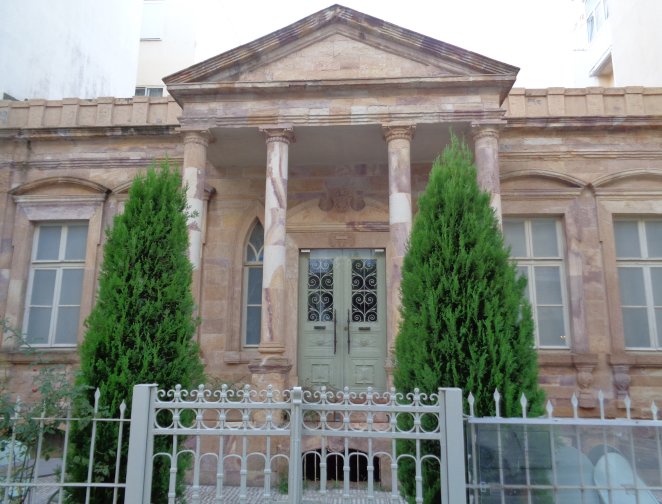 |
Lighthouse of Alexandroupolis Ethnological Museum
Evros Delta National Park
Just 20 miles from the city, the Evros Delta is one of Europe's most important habitats with 200,000-acre area, which is on the list of protected areas of the International Ramsar Convention (1971) due to the significant and rare species of plants (more than 300 species), fauna (40 species of mammals, 28 species of reptiles and 46 species of fish) and birds(320 species). Part of the Delta has been designated as a Special Protection Area and is proposed as a Site of Community Interest in the Natura 2000 Network.
Ethnological Museum of Thrace
It is housed in a 1899 built neoclassical stone building on 14 May, 63 street, and has been operating since October 2002 to preserve historical memory in the wider geographical area of Thrace. It includes exhibits on the tradition of Thrace and covers the following themes: clothing, music and worship, confectionery, bronze and earthenware, textiles, land cultivation.
Cave of Cyclops
It is located in Makri and is a famous cave of the Cyclops Polyphemus according to local folk tradition. It has traces of use since the Neolithic period (about 4,500 BC) and today the Neolithic settlement, one of the most important in the Balkans, has been discovered.
The archaeological site of Mesembria-Zone
Mesimbria-Zone is an archaeological site 20 km from Alexandroupolis. A number of coins and ruins from an ancient city, probably Zone, have been found here. It was one of the colony-fortresses of Samothrace and flourished in the 5th and 4th centuries BC. The main buildings are: the sanctuary of Demeter, the temple of Apollo, the fortification wall, the walled settlement of the Hellenistic years, the cemetery and the Residences. It is noteworthy that a number of amphorae can be seen that were probably used as a waterproofing system.
Thermal springs of Traianoupoli
The thermal springs of Traianoupoli are 14 km away from the city of Alexandroupolis and are of the most famous hot springs in the region, since ancient times. Hana was an Ottoman inn and behind it during the Ottoman Empire there were baths (hamams), today ruins from the 16th century. In 1964, modern facilities for bath therapy and positherapy were rebuilt at the archeological site, which are officially recognized by the Greek state for their healing properties and are considered one of the most important in Greece.
Museums
- Historical Museum of Alexandroupolis (335, Democracy Avenue)
- Ethnological Museum of Thrace (63, 14 May street)
- Archaeological Museum of Alexandroupolis (44, Makris Avenue)
- Ecclesiastical Museum of the Holy Metropolis of Alexandroupolis (Mitropoleos Square)
- Folklore Museum of Cappadocian Association of Alexandroupolis (1, Mitropoulou street)
- Museum of Folklore and Natural History (8, Thermopylae street, Nea Chili)
- Museum of Natural History (Platanopathos of Maistros)
- Museum of Flora and Fauna (Art & Culture Center "Georgios Vizyinos")
- Museum of Sarakatsani Tradition (Aisymi)
Historic Preserved Buildings of architectural interest
- Zariphios Pedagogical Academy, founded by Georgios Zariphis
- Kapnomagazo (Tobacco store), now municipal library
- Old Hospital
- Democritus University of Thrace Building (Reading room)
- Port Customs Buildings
- 1st Primary School
- 3rd Primary School
- Building of Missionary Action
- The historic building of the National Bank (houses the Reading Room of the Democritus University)
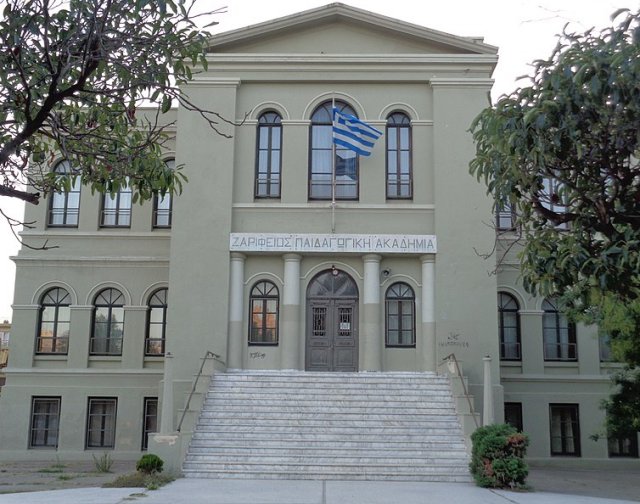 |
 |
Zariphios Educational Academy Kapnomagazo
 |
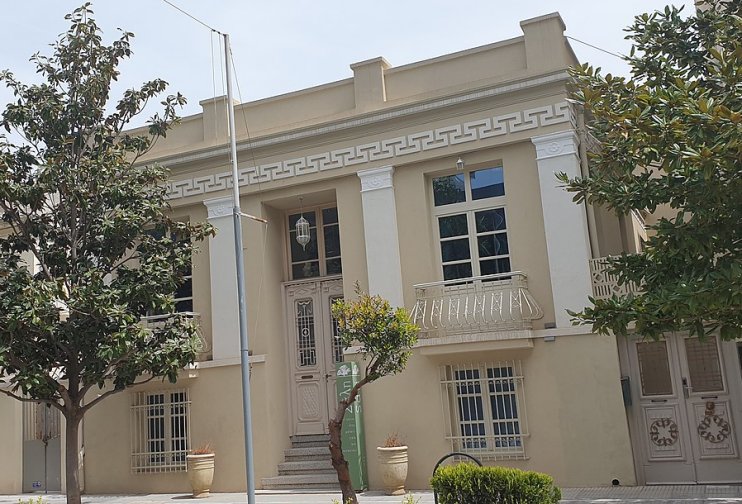 |
Historic building of the National Bank Building of Missionary Action